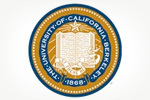Achievement
Making practical quantum computers

Project
Nanoscale Science and Engineering - From Building Blocks to Functional Systems
University
University of California at Berkeley
(Berkeley, CA)
Research Achievements
Making practical quantum computers
Non-linear-optical properties in C60 have attracted enormous attention for over two decades. The endohedral complex N@C60, with its remarkable thermal stability and spin-quartet ground state, is a candidate for future room-temperature quantum computing, but there has been no investigation of its non-linear-optical properties. Trainee David Strubbe performed a first-principles calculation which shows that N@C60 is a promising material for nanoscale and ultrafast modulations. Excitation by a pump laser pulse of the nitrogen-atom vibration inside the C60 cage transiently breaks inversion symmetry and can enable second-harmonic generation (SHG) from a probe pulse. Unlike the SHG observed in C60 thin films, this harmonic signal is switched on and off periodically every 345 fs. For an fcc crystal of N@C60, the second-order susceptibility χ(2) is on the order of 10−8 esu, similar to commercially used nonlinear materials. This finding brings us closer to making practical quantum computers.
SEE MORE:
- “Research Achievements”
- Achievements for this Project





